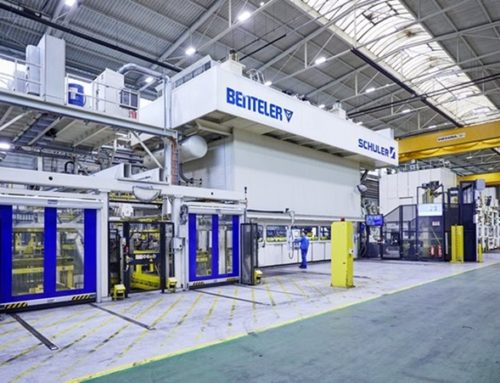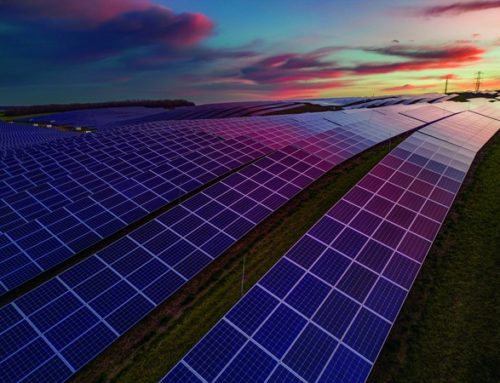1. Wind Energy: A Revolution in Global Power Dynamics
As the world grapples with the pressing need for sustainable energy solutions, one force of nature stands out in its potential to revolutionise our power systems – the wind. This article delves into the transformative role of wind energy in shaping the future of global power and politics.
Wind energy, harnessed through turbines that dot landscapes and offshore installations, is not just an alternative source of power. It’s a catalyst for geopolitical shifts and a key player in the global energy chessboard. As nations worldwide pivot towards cleaner, renewable sources of energy, wind power is emerging as a game-changer, influencing policy decisions, international relations, and economic structures.
Wind energy
Wind energy is increasingly becoming a significant player in global politics, with several geopolitical implications:
- Energy Security: Wind energy is being used as a strategic tool by states aiming to bolster their energy independence and improve resilience to supply chain shocks¹. The shift towards renewable energy is gradually moving us away from reliance on oil-rich nations to those who lead in wind technology.
- Economic Growth: As investments in wind power grow, economic strategies are changing. Nations are using wind energy for more than just environmental benefits; it’s becoming a tool for economic growth.
- International Relations: Wind turbines do more than generate power; they forge new alliances around the world. As countries invest more in wind power, new paths in international relations are emerging.
- National Security: Wind energy is promising to boost national security as well. This change is elevating wind energy as a major element in global geopolitics.
- Decentralization of Power: Wind and solar energy are harvested in a decentralized fashion, making it harder to use as an efficient political energy weapon.
- Global Leadership: Countries across the globe, like China and the US, are investing in both onshore and offshore wind capacities. China leads the pack, adding substantial new capacity annually, supported by ambitious governmental renewable energy targets.
The transformative role of wind energy in reshaping global geopolitics and economies is unmistakable. As nations increasingly pivot towards sustainable energy solutions, wind energy stands out for its capacity to enhance energy security, drive economic growth, and forge new international collaborations.
Challenges
Implementing wind energy on a global scale presents several challenges:
- Atmospheric Conditions: The physics of atmospheric flow, especially in the critical zone of wind power plant operation, is a significant challenge. Understanding and predicting wind patterns and speeds is crucial for efficient energy production.
- Turbine Design: Wind turbines are the largest, most flexible machines ever built. The system dynamics and materials of wind turbines present a challenge in terms of durability, efficiency, and cost.
- Plant/Grid Interaction: The optimization and control of fleets of wind power plants made up of hundreds of individual generators working to support the electric grid is a complex task.
- Environmental Co-Design: The environmental impact of wind farms, including noise pollution and effects on local wildlife, needs to be carefully managed.
- Social Acceptance: Public perception and acceptance of wind energy projects can be a hurdle. Issues such as visual impact, noise, and perceived health impacts can lead to public opposition.
- Economic Factors: Wind power must compete with other low-cost energy sources. The initial investment for wind power installation can be high, and the return on investment depends on many variables, including wind speeds and government policies.
- Infrastructure: Adequate infrastructure, including transmission lines and grid integration, is necessary to deliver wind-generated electricity from remote locations to consumers.
These challenges are surmountable with appropriate investments and continued research and development. Despite these challenges, the potential benefits of wind energy make it a promising solution for our global energy needs.
2. PHL-US FTA on Cyberspace and Digital Technology

Eibner Saliba via Unsplash
In an era where digital technology and cyberspace are reshaping the global economic landscape, the Philippines is taking a proactive stance. This article explores the country’s pursuit of a Free Trade Agreement (FTA) with the United States, specifically focusing on cyberspace and digital technology. It delves into the potential benefits, challenges, and implications of such a groundbreaking agreement. Furthermore, it sheds light on the Philippines’ ongoing trade negotiations with Japan, a key player in the global technology market. Join us as we navigate these complex and exciting developments in international trade and digital diplomacy.
The Philippines is considering a bilateral Free Trade Agreement (FTA) with the United States specifically focusing on cyberspace and digital technology. This plan is part of the two nations’ renewed interest to further enhance trade and economic cooperation. The US is looking at the Philippines as a major investment hub for many American firms. The Indo-Pacific Economic Framework for Prosperity (IPEF) meeting, which will be held in Manila, is expected to give a clearer picture of the direction of the economic setup of the two countries. The IPEF, which the US has started and the Philippines being one of the founding members, is looking at including the entire ASEAN.
PHL-Japan Trade Deal
The general review of the Philippines-Japan Economic Partnership Agreement (PJEPA) has been stalled due to concerns over market access for agricultural products, particularly bananas, which are major export products of the country. The Philippines is keen on negotiating better market access for bananas, especially because the local exporters still pay a substantial amount of duties for entry. Currently, the Philippine bananas are imposed with an 18-percent tariff during the winter season and a lower 8 percent during summer. The Philippines-Japan FTA review and renegotiation has not moved forward, particularly because of the Philippines’s insistence on discussing and negotiating for better market access for their agricultural product.
These negotiations are complex and involve a multitude of factors. They represent significant steps towards enhancing international trade and cooperation in the digital age. Please note that the situation is dynamic and the details may change as the negotiations progress.
Benefits
For the Philippines: This agreement could attract more American firms to invest in the country, potentially leading to job creation and economic growth. It could also enhance the country’s digital infrastructure and capabilities, fostering innovation and technological advancement.
– For the US: The agreement could provide American firms with greater access to the Philippine market, which is one of the fastest-growing in Southeast Asia. It could also strengthen the US’s strategic presence in the region.
– For the Philippines: Improved market access for agricultural products, particularly bananas, could boost the country’s exports and benefit local farmers. It could also strengthen the country’s economic ties with Japan, one of its major trading partners.
– For Japan: The agreement could ensure a steady supply of agricultural products from the Philippines. It could also enhance Japan’s economic and strategic relations with the Philippines and the broader ASEAN region.
3. Vision 2030 vs Free Trade: The Saudi Industrial Agenda’s Effect on China-Gulf Talks

Abdulrhman Alkhnaifer via Unsplash
In a world increasingly defined by global commerce, free trade agreements serve as the backbone of international economic relations. Yet, these negotiations are often fraught with complexities and challenges. A prime example of this is the ongoing China-Gulf free trade talks, which have recently hit a stumbling block. According to reliable sources, the discussions have stalled due to Saudi Arabia’s industrial agenda. This article delves into the intricacies of these negotiations, exploring the reasons behind the impasse and its potential implications for both parties and the global economy at large.
Industrial Agenda
Saudi Arabia’s industrial agenda is a key part of its broader economic transformation plan, known as Vision 2030. This ambitious program, driven by the country’s de facto leader, Crown Prince Mohammed bin Salman, aims to lessen Saudi Arabia’s dependence on oil rents by creating a strong private sector and transforming the kingdom into a major global business hub.
The industrial part of this transformation plan involves developing a nascent manufacturing industry that the government hopes will one day produce everything from computer chips to tires. To build its own manufacturing industry, Saudi Arabia is partnering with foreign firms, including from China, to develop local capabilities and manufacturing lines in the kingdom.
However, there are challenges to this industrial transformation. One of these is the potential competition with lower-cost Chinese goods. Saudi Arabia is concerned that a wave of cheaper Chinese versions of products that it hopes to manufacture domestically could undermine its industrial agenda. This concern has reportedly led to a stall in the China-Gulf free trade talks.
In October 2022, Saudi Arabia launched its new National Strategy for Industry as part of efforts to create an industrial economy that supports Vision 2030’s goals for economic diversification, investor attraction, and growth of the Kingdom’s non-oil exports.
4. Germany pulls in record level of FDI in 2023

Kai Pilger via Unsplash
In 2023, Germany saw a significant influx of Foreign Direct Investment (FDI) across various sectors. The sectors that attracted the most investment were:
- Digitalization: As the world becomes increasingly connected, the digital sector in Germany has seen substantial growth and investment.
- Healthcare and Life Sciences: This sector continues to be a major focus for investors, given the ongoing global health challenges and Germany’s strong reputation in healthcare innovation.
- Energy and Resources: With the global shift towards sustainable energy sources, Germany’s energy sector has attracted significant investment.
- Electronics and Automation: Germany’s strong manufacturing base and expertise in automation have made it an attractive destination for investment in this sector.
- Mobility and Logistics: As a central hub in Europe, Germany’s logistics and mobility sectors have also seen considerable investment.
It’s also worth noting that the United States was the leading country of origin for these investments, followed by Switzerland, China, the United Kingdom, the Netherlands, and France. This broad range of sectors and countries of origin underscores the strength and diversity of Germany’s economy. Please note that these are the sectors that attracted the most FDI in 2023, and the distribution may vary in other years.
Tax incentives
Tax incentives played a significant role in attracting Foreign Direct Investment (FDI) to Germany in 2023. Here are some key points:
- Research and Development (R&D) Allowance: The German Research Allowance Act, introduced in 2019, guarantees a tax-free subsidy of 25% of salaries and wages for certain R&D purposes, up to a limit of EUR 500,000 per annum. This allowance was increased to EUR 1 million per annum from 1 July 2020 until 30 June 2026 in response to the COVID-19 pandemic. Furthermore, the Growth Opportunities Act of 27 March 2024 introduced a further scaling-up of the R&D allowance.
- Investment Premium: The draft bill included an investment premium, which was publicly discussed and likely contributed to the surge in FDI.
- Local Incentives: Local authorities may offer facilities on favorable terms, such as the provision of cheap land on industrial estates, as well as certain direct government aid.
- Foreign Tax Credit: If foreign-source income is not exempt from German taxation, a credit will be given for the foreign tax actually paid and not otherwise recoverable.
It’s important to note that while these tax incentives have likely contributed to the surge in FDI, the specific impact of each incentive may vary and is influenced by a range of other factors. Please consult with an expert or conduct further research for a more comprehensive understanding.
5. French Cloud: Amazon and Microsoft Invest in France’s AI Infrastructure

Chris Karidis via Unsplash
In an era where technology is reshaping economies and industries, two tech giants, Amazon and Microsoft, are making significant strides in bolstering France’s cloud computing and artificial intelligence (AI) infrastructure. This article delves into the details of these investments and their potential impact on France’s digital landscape. We’ll explore how these strategic investments could catalyse innovation, foster economic growth, and position France as a global leader in cloud services and AI technologies. Stay tuned as we unpack the implications of these developments and what they mean for the future of technology in France and beyond.
Amazon and Microsoft are making significant investments in France’s cloud computing and artificial intelligence (AI) infrastructure.
Amazon Web Services (AWS) will invest around $1.3 billion (€1.2 billion) in France’s cloud computing infrastructure. The investment will go towards new cloud infrastructure around Paris to support France’s efforts in generative AI. Alongside the investment, AWS also committed to creating 3,000 new jobs across France.
Microsoft, on the other hand, announced an investment of $4.3 billion in France’s AI and cloud industries. They plan to help train over a million people in France in AI. In collaboration with the government employment agency Travail, Microsoft will help deploy AI training to job seekers. The $4.3 billion invested by Microsoft will be used to create more data centres to keep up with the large compute workload needed to power generative AI. Extensions on existing data centres in Paris and Marseille are planned, as well as a new data centre campus in the Grand Est Region.
These investments are part of a broader push by President Emmanuel Macron to draw international investors and position France as a global leader in AI and cloud services. These strategic investments could catalyse innovation, foster economic growth, and have a significant impact on France’s digital landscape.
6. Catalonia’s Economic Triumph: Record €880M FDI in 2023

Lucas Gallone via Unsplash
In a remarkable economic achievement, Catalonia has drawn in a staggering €880 million in Foreign Direct Investment (FDI) during the year 2023. This impressive figure marks the highest level of FDI in the region since 1985. This surge in investment not only underscores the robustness of Catalonia’s economy, but also signals a renewed confidence among global investors. In this article, we delve into the factors that have contributed to this significant economic milestone and explore what it means for the future of Catalonia.
Reasons
Catalonia’s record-breaking Foreign Direct Investment (FDI) in 2023 can be attributed to several key factors:
- Increased Number of Projects: In 2023, a total of 112 FDI projects were secured in Catalonia, marking a 19% increase compared to 2022. This was the first time the number of projects exceeded 100.
- Job Creation: These investments led to the creation of 4,533 new jobs, a rise of 31% from 2022.
- Investment Types: Out of the 112 projects, 42% were greenfield investments, while the remaining 58% were expansions or new investments by companies already established in the region.
- Sectoral Distribution: The FDI was majorly of an industrial nature (67%), with significant investments also in technology sectors (26%), life sciences (14%), automotive (12%), video games (11%), and food (10%).
- Government Efforts: The Catalan Government, through ACCIÓ-Catalonia Trade & Investment, played a crucial role in attracting this foreign investment.
- Long-term Growth: Over the past five years (2019-2023), ACCIÓ-Catalonia Trade & Investment attracted €2.955 billion in investment, showing a 90% increase from the previous five-year period (2014-2018). This indicates a positive trend in the organization’s ability to draw investments over time.
These factors combined led to Catalonia attracting €880 million ($950 million) in foreign investment during 2023, a 42% increase over the previous year and the highest since 1985. This achievement underscores the competitiveness of Catalonia in the business world and the trust international investors have in the region.
Featured image Sander Weeteling via Unsplash







